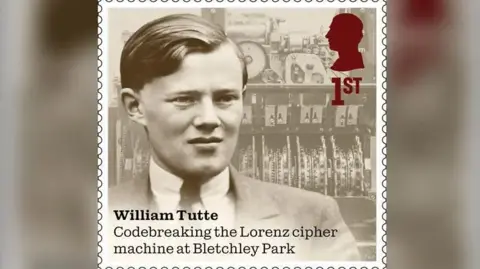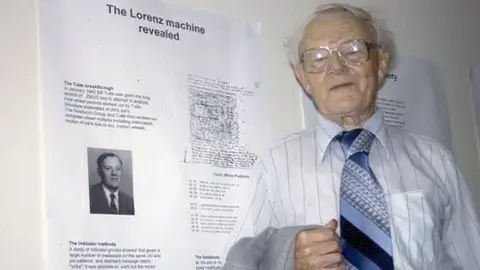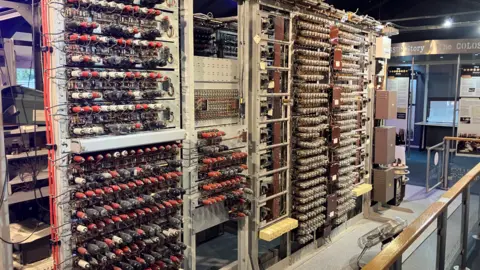Codebreaker Bill Tutte is honoured on VE Day stamp
 PA Media
PA MediaThe face of a World War Two codebreaker is appearing on a special set of stamps being issued to mark the 80th anniversary of VE Day.
William Tutte, or Bill, was born in Newmarket, Suffolk, in 1917, and was invited to help with codebreaking efforts at Bletchley Park. He was instrumental in helping decrypt the German Lorenz cipher.
He features on a set of 10 stamps honouring men and women who have made remarkable contributions during the war, and Royal Mail will also apply a special VE80 postmark in the week of the anniversary in May.
Chief executive Emma Gilthorpe said Royal Mail was "proud to issue these stamps honouring the courage, sacrifice and resilience of those who fought for freedom and peace".
Mr Tutte joined the Bletchley Park team in 1941, when work was being carried out by Alan Turing and his colleagues on decoding messages sent via the Enigma machines.
 Richard Youlden
Richard YouldenMr Tutte was offered scholarships at a high school in Cambridge and later at Trinity College, Cambridge, where he obtained a first class honours degree in chemistry and, after the war, a doctorate in mathematics.
At Bletchley Park, Mr Tutte was presented with the task of deciphering the teleprinter code - a task which took him about six months.
It would take about six weeks for a message to be decrypted.
Engineers at Bletchley then constructed a device which mimicked the German encryption machine to speed up the process.
The Colossus, one of the first pre-computers, cut the time to six hours.
 Sam Read/BBC
Sam Read/BBCMr Tutte died in Canada in 2002, just a few years after details of the secret operations at Bletchley Park had started to be released.
A memorial to the mathematician was unveiled in Newmarket in May 2017 - marking the centenary of his birth.
The special stamps also include Mahinder Singh Pujji, a Royal Air Force and Indian Air Force pilot awarded the Distinguished Flying Cross; Mary Morris, whose diaries described how she nursed troops returning from Dunkirk - and Dame Vera Lynn.
Follow Suffolk news on BBC Sounds, Facebook, Instagram and X.
